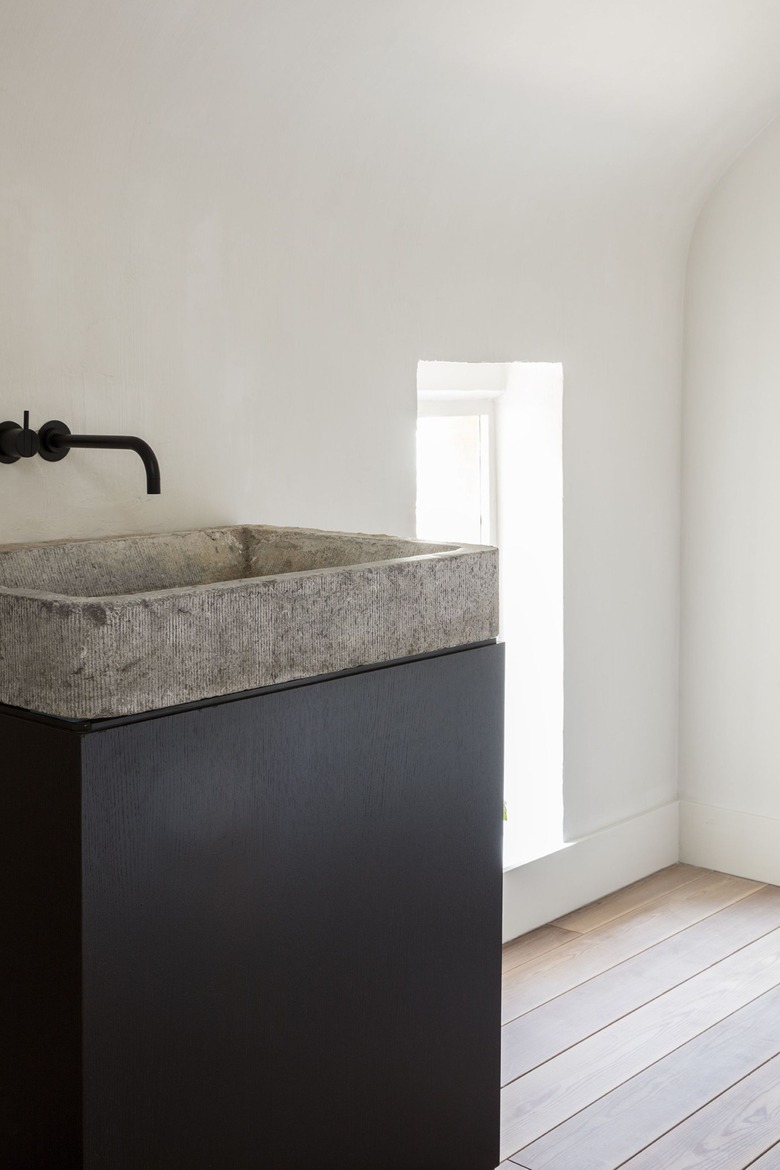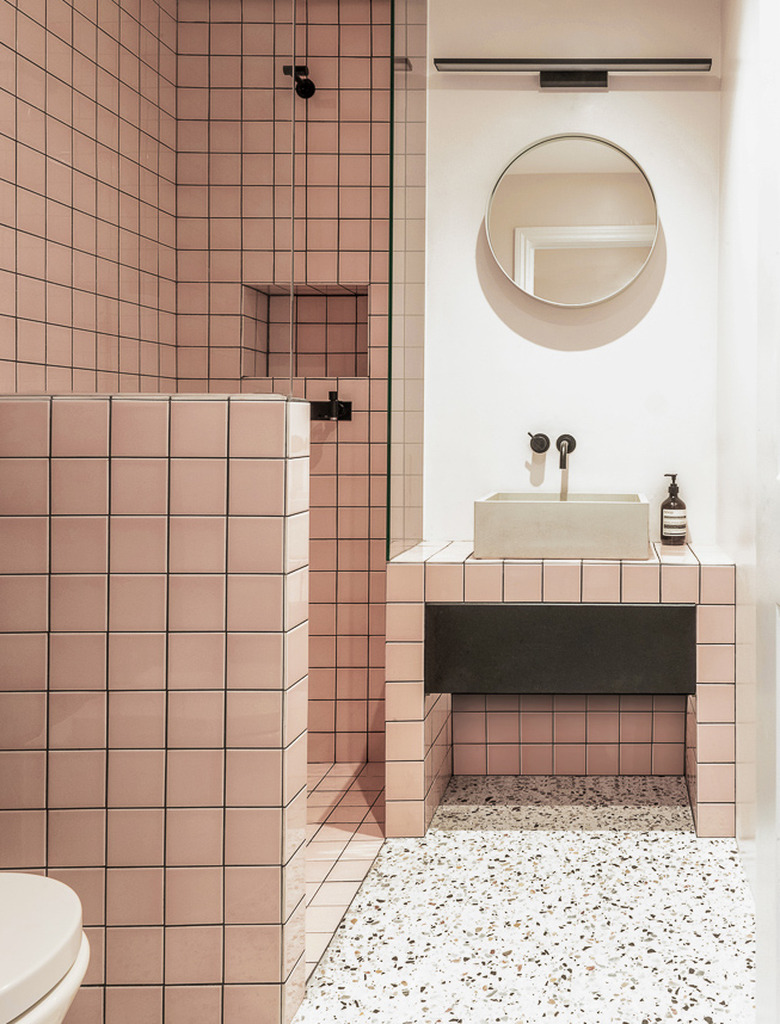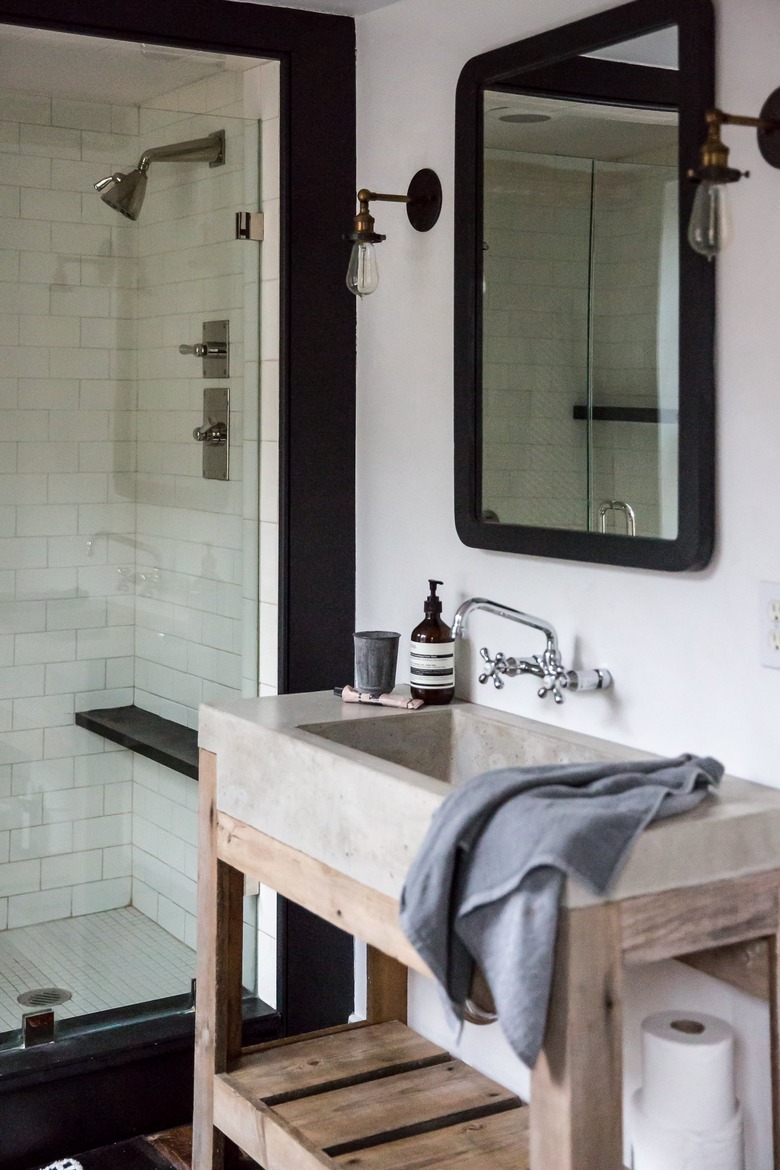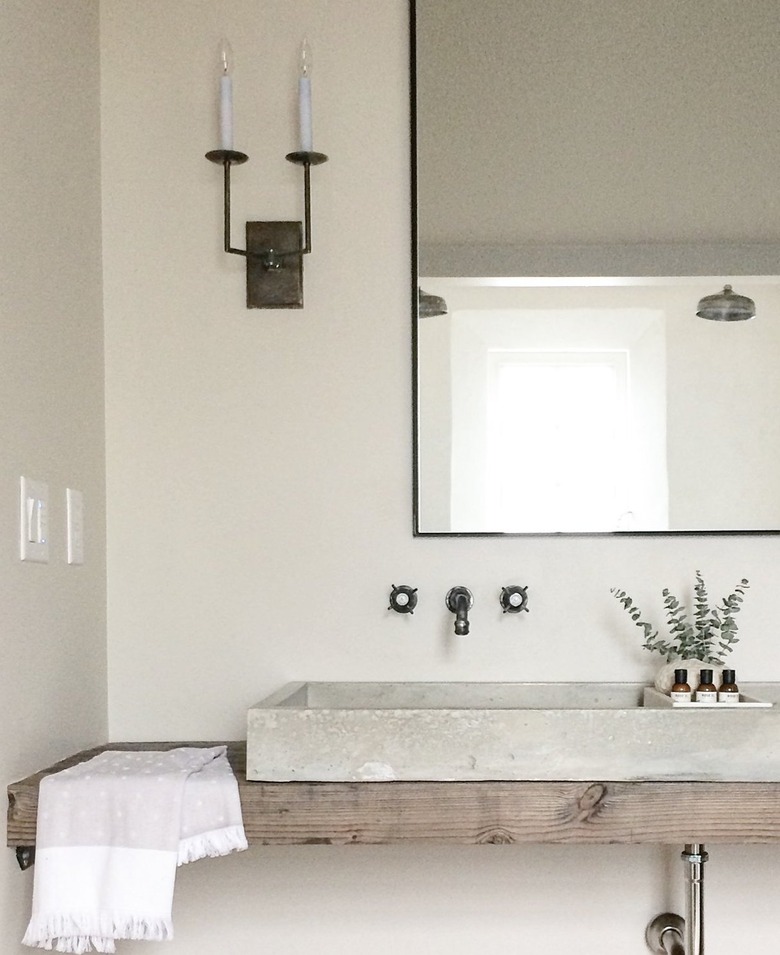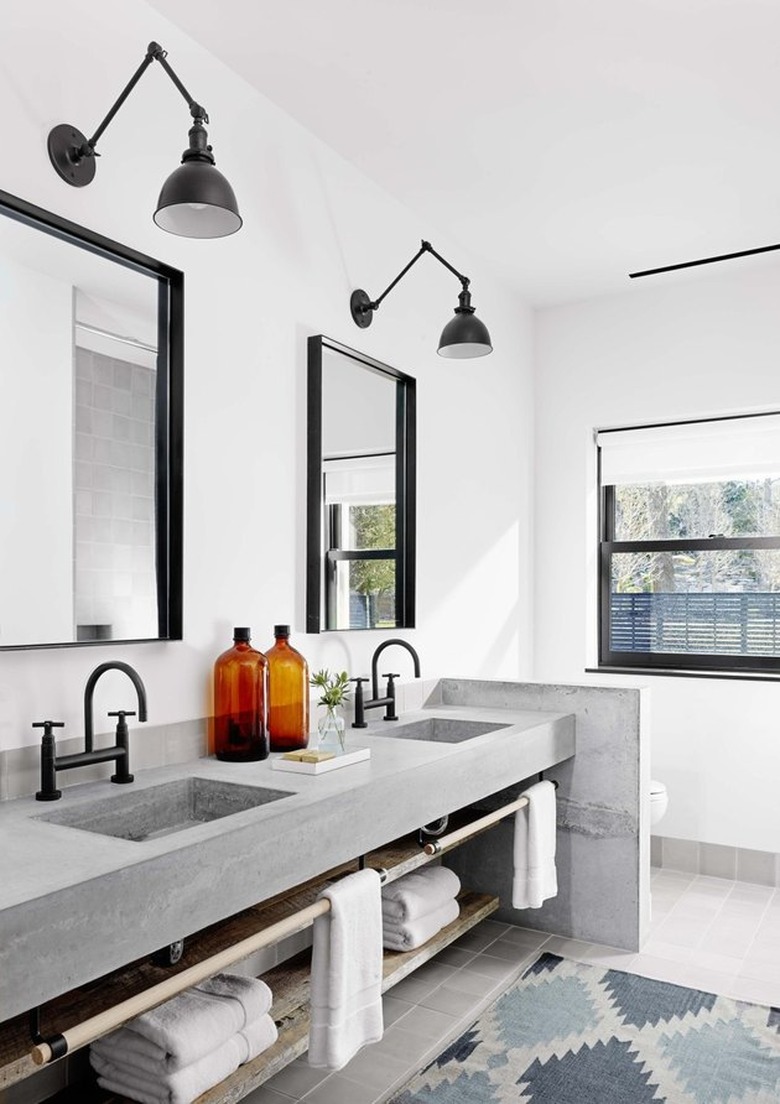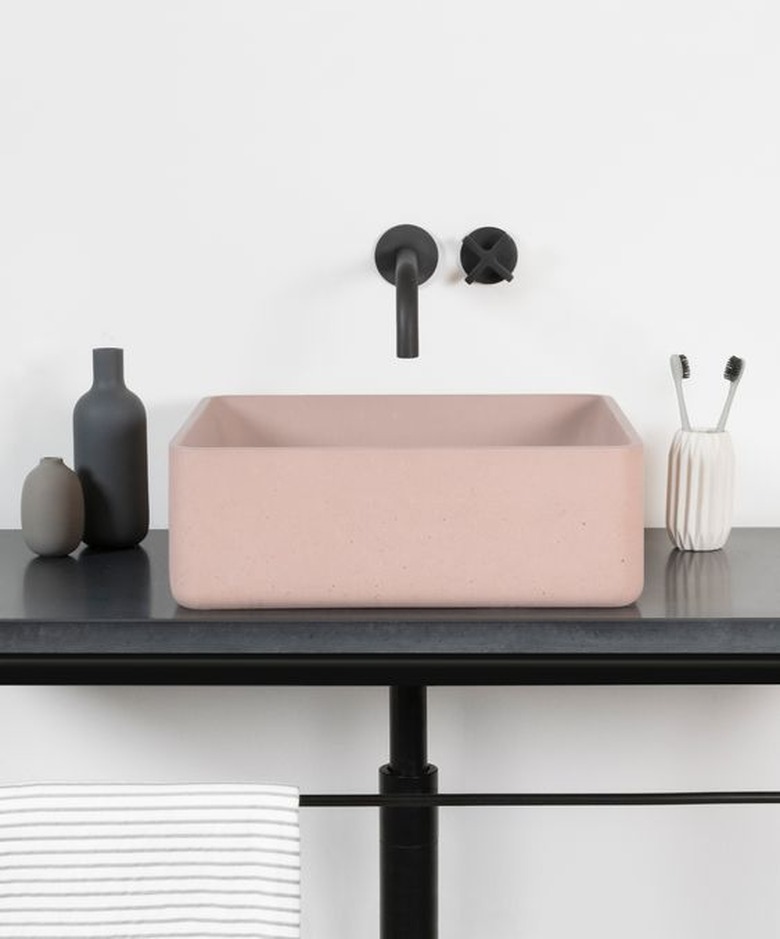ICYMI: Concrete Bathroom Sinks Are Oh-So-Chic
Thanks to its rugged good looks and perfectly imperfect nature, concrete is increasingly a go-to material in homes looking for a more functional and utilitarian feel. But more often than not, homeowners are at a loss when it comes to where and how to use it. We've got the answers! Strength and versatility make concrete an ideal solution for the bathroom, and one of the easiest ways to incorporate it is via the sink. If you're looking for a flawless material, you might want to look elsewhere, but if you love the industrial look and unfinished texture, here's all you need to know about concrete bathroom sinks.
Pros of a Concrete Bathroom Sink
Pros of a Concrete Bathroom Sink
When it comes to bathroom sinks, you're most likely looking for something strong and durable and concrete embodies both of those characteristics. A combination of cement and sand makes this material absolutely rock solid and even if it does mark or get hairline cracks, repair is easier than any other material.
Any patina developed over time adds to the general effect of the design-led industrial aesthetic, and it's a pretty inexpensive material to get ahold of if you wanted to take a punt at making your own (although not so much if you want someone else to do it!).
Cons of a Concrete Bathroom Sink
Cons of a Concrete Bathroom Sink
While we mentioned repair is relatively easy, there is a chance that concrete can crack, especially small hairline fractures. The material is also susceptible to stains and scratches, even with a sealant. So if you go ahead with concrete, you'll need to embrace the marks, scratches, and natural patina that may occur over time.
How Much Does a Concrete Bathroom Sink Cost?
How Much Does a Concrete Bathroom Sink Cost?
Despite being a relatively inexpensive material, concrete bathroom sinks are viewed as pieces of sculpture in the world of interiors and can often cost a pretty penny compared to a simple self-rimming sink, for instance. Dependent on size and design, a concrete bathroom sink can set you back a few thousand dollars, around $4,000 for bespoke options. Feeling brave? DIY your own and save your hard-earned cash!
How Do You Care for a Concrete Bathroom Sink?
How Do You Care for a Concrete Bathroom Sink?
Because concrete is a porous material, your sink will need to be sealed to protect it from stains and discoloration. This should have already been done for you if buying off the shelf, but do check before you commit to a purchase. There are two types of sealant: Film-forming sealers which include acrylics, epoxies, and urethanes that give a smoother finish and will keep out moisture and prevent staining but will need to be reapplied frequently; penetrating sealers on the other hand include silanes, siloxanes, silicates, and siliconates that penetrate into the concrete, resulting in a longer lifespan and a more natural look.
Regardless of whether your sink is pre-sealed, you'll need to maintain the finish by using a wax or polishing agent regularly. You can take care of any stains by polishing them out using a concrete polishing pad and then reapplying the sealant.
1. Toughen up your look.
1. Toughen up your look.
If you're looking to toughen up a feminine aesthetic, concrete is an ideal way to add some raw texture and "rough around the edges" appeal. Make a statement in your own contemporary oasis by adding a simple trough or vessel bathroom sink to your space — as seen in this scheme by Yellow Cloud Studio. It'll be easier on the budget while still ticking those cutting-edge design boxes!
2. Do it yourself.
2. Do it yourself.
Making a concrete bathroom sink may not be as hard as you think. The unique material combines the organic characteristics of natural stone with the ability to be cast into any shape — you just need to get the mold right. Looking for inspiration? Percy and Tara of Jersey Ice Cream Co. paired a concrete bathroom sink in this chic industrial refuge using poured concrete and reclaimed wood. The result is a rustic unit that looks fit for any boutique hotel.
3. Add some texture.
3. Add some texture.
The beauty of concrete is the texture it can add with very little effort — you can go as smooth or as rustic as you wish. The minimalist nature of this bathroom by Juma Architects shows off the rough aesthetic of the concrete bathroom sink in all its industrial glory.
4. Keep it slim.
4. Keep it slim.
If you don't have much square footage available in your bathroom but want the luxe look, a narrow trough sink is a perfect solution that doesn't take up much space. Plus, it won't overwhelm you visually either. This sleek concrete sink looks right at home sitting on top of a wood countertop, not to mention its minimal design will make cleaning a breeze.
5. Integrate countertops.
5. Integrate countertops.
An integrated concrete sink and countertop design allows for complete personalization in your bathroom. This slick industrial setup designed by Aamodt / Plumb boasts a double vanity area complete with black deck-mount faucets and plenty of towel storage below. Go this route if you want something completely unique.
6. Soften it up with color.
6. Soften it up with color.
The beauty of concrete is how versatile it is, which is made evident by the wide range of color options available. And using tints and precision blends, you can get a varied range of finishes like the blush pink hue of this contoured basin. And the elegant slim-edge countertop and wall-mount faucet allow the vessel sink to take center stage. Quick, add it to your powder room right now.
Shopping for a Concrete Bathroom Sink:
Shopping for a Concrete Bathroom Sink:
Looking for a concrete bathroom sink? Shop these brands for a dash of industrial perfection.
With striking and sophisticated forms, Kast is your one-stop shop for concrete bathroom sinks designed with customizable options for size, color, and style. Each basin is made to order at a factory in the UK, so each design is tailor-made just for you.
This award-winning design studio aims to inspire freedom when designing using an ethical approach. Choose from several concrete basin options available in 14 different colorways.
Trueform Concrete has a complete collection of floating concrete bathroom sinks and concrete vanities with bases. Each product category has multiple options to choose from to help you customize to your specific design needs.
